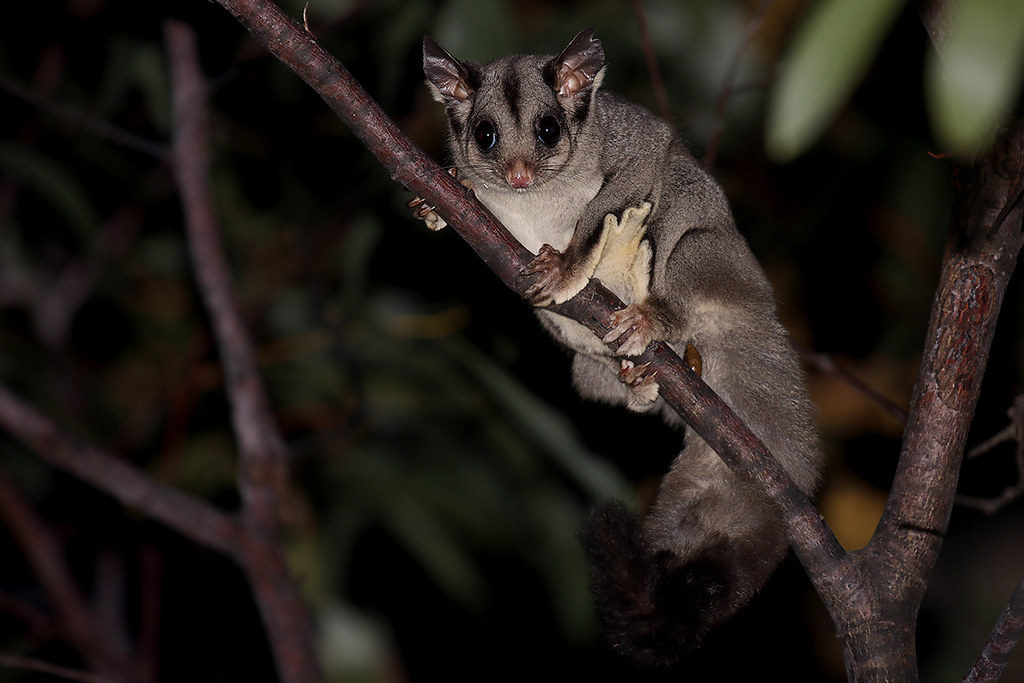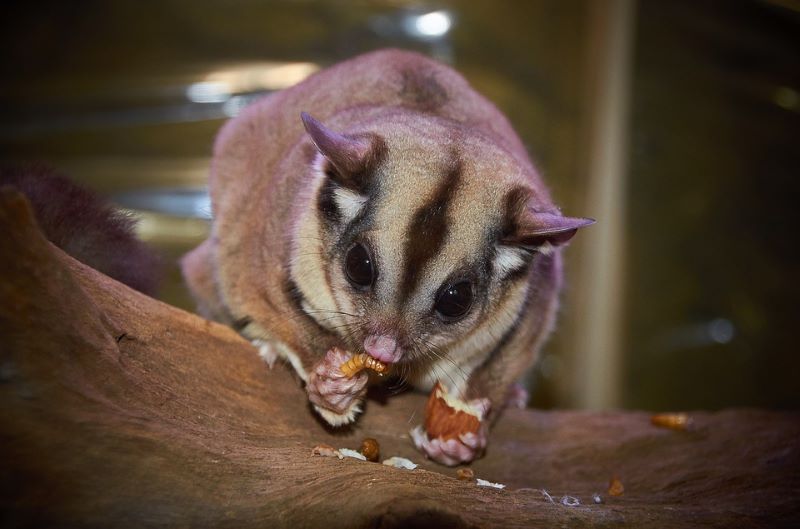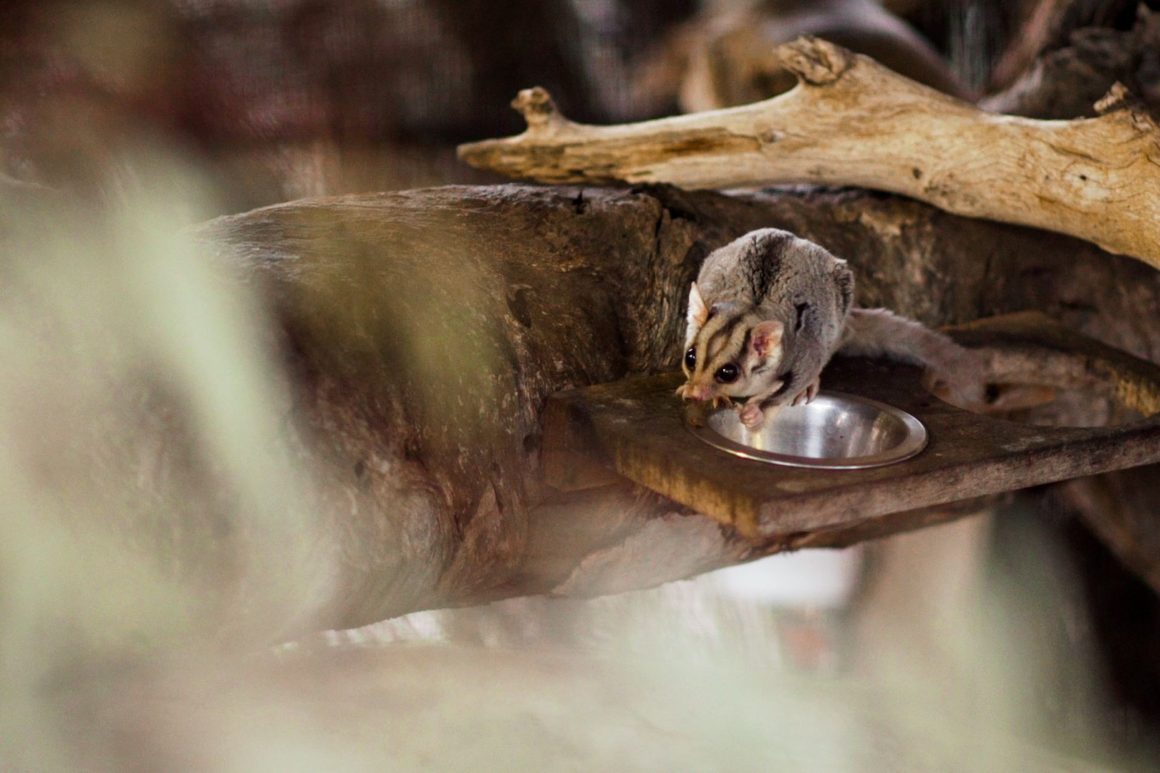Noisy and boisterous Brushtails often give all possums a bad name. But the Sugar Glider, another possum, doesn’t deserve this reputation at all. These little denizens of the night are quiet, shy, and astonishingly charming. They are important pollinators for many native trees and one of the few gliding mammals to call Australia home. These little possums have all but disappeared from much of suburban Australia, in part due to the presence of cats and the loss of nesting hollows. The good news is that they have been shown to make remarkable recoveries when suitable habitat is created. Their arboreal lifestyle means they can easily make their way to new habitats by travelling through the canopy. Creating Sugar Glider habitat is simple, and with a few modifications to your garden you too can welcome them into your backyard!
Home sweet home
The fastest and easiest garden modification you can make is to install a nesting box. Not just any nesting box will do! Nesting boxes, just like tree hollows, come in many different shapes and sizes, and sugar gliders can be picky! A well-designed sugar glider nesting box will have a small entry hole less than 10 cm in diameter. This prevents larger animals accessing the box and also minimises cold drafts in the winter time. A good nest box will also have a baffle (a ‘shield’ over a part of the whole) just inside the entrance to prevent birds, like the Indian Myna, from using the box. This works because sugar gliders are extremely flexible and can manoeuvre through the tight space created by the baffle, while most birds cannot. A good nest box should also be large enough for more than one sugar glider to nest in, as they are social possums and often nest in large family groups.

A feast fit for a glider
Once you’ve got a nest box up, the next thing to consider is food, and this can be achieved with some inexpensive planting. Although insects make up a portion of the Sugar Glider’s diet, the majority is tree sap, pollen, and nectar.
To provide a good supply of food, a great genus of Australian plants to add to your garden are the wattles (Acacia spp.). This group of plants range from small shrubs to tall trees, though generally only those species which grow into trees are utilised by sugar gliders. Three great species to consider are Acacia dealbata, Acacia mearnsii, and Acacia melanoxylon, though be sure to only pick species native to your area as they will handle your soils and climate best.
![Acacia dealbata is a good source of food for sugar gliders. Image: Roozita [CC BY-SA 3.0], via Wikimedia Commons.](https://www.rememberthewild.org.au/wp-content/uploads/2019/09/800px-Acacia_dealbata_2014.jpg)
The Australian gum trees are another group to consider planting, though they often grow much taller than wattle trees or Banksia. Three main genera to consider are Corymbia, Angophora and Eucalyptus. Your local indigenous nursery will likely stock a wide range of species, so go and check them out and see which ones you like best.
Keeping your gliders safe
Finally, once you’ve created the right backyard habitat, it’s important that you keep your Sugar Gliders safe. Three main threats to urban Sugar Gliders are cats, European Honeybees and a lack of canopy cover.
Cats should never be allowed to roam free outdoors as it’s dangerous not only for your cat but also for native wildlife (like Sugar Gliders) which cats will often prey on. So, for the safety of your tabby and your gliders, keep your cat indoors.
European Honeybees can also be a problem as they will sometimes invade nest boxes. Keep an eye out and if you spot bees flying in and out, it may be time to call a honeybee rescue service to safely remove the hive. Very often they’ll do it free of charge too!
Lastly, consider connectivity. Sugar Gliders get around by gliding from tree to tree, but if there is not enough tree cover, they may resort to moving along the ground. This is incredibly dangerous for Sugar Gliders as it makes them vulnerable to predators. To keep your gliders off the ground, make sure there are enough trees planted to allow them to comfortably move around without leaving the canopy. Speak to your neighbours and see if you can cooperate with them to plant a Sugar Glider ‘highway’ through your backyards.

Now it’s time to get cracking on cultivating a backyard sugar glider grove and inviting these incredible native mammals into your garden! It’s a fantastic weekend project and you’ll be helping to conserve our urban wildlife in the process. So, head out into the garden and get growing for gliders.
Banner image courtesy of Tim Brown and Remember The Wild.


Leave a Reply